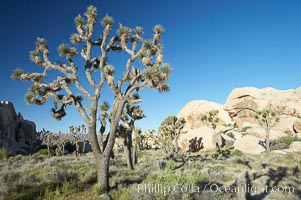
Joshua trees and strange rock formations characteristic of the Mojave desert region of Joshua Tree National Park.
Species: Joshua tree, Yucca brevifolia
Location: Joshua Tree National Park, California
Image ID: 11992
Species: Joshua tree, Yucca brevifolia
Location: Joshua Tree National Park, California
Image ID: 11992
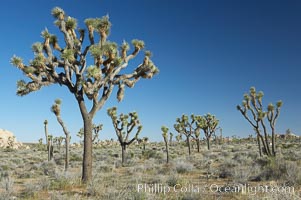
Joshua trees are found in the Mojave desert region of Joshua Tree National Park.
Species: Joshua tree, Yucca brevifolia
Location: Joshua Tree National Park, California
Image ID: 11993
Species: Joshua tree, Yucca brevifolia
Location: Joshua Tree National Park, California
Image ID: 11993
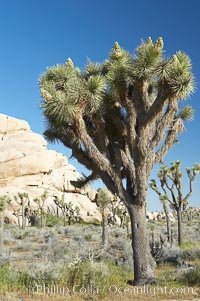
Joshua trees and strange rock formations characteristic of the Mojave desert region of Joshua Tree National Park.
Species: Joshua tree, Yucca brevifolia
Location: Joshua Tree National Park, California
Image ID: 11994
Species: Joshua tree, Yucca brevifolia
Location: Joshua Tree National Park, California
Image ID: 11994
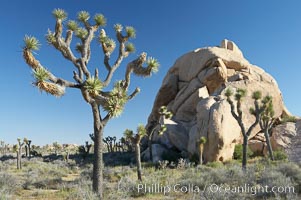
Joshua trees and strange rock formations characteristic of the Mojave desert region of Joshua Tree National Park.
Species: Joshua tree, Yucca brevifolia
Location: Joshua Tree National Park, California
Image ID: 11995
Species: Joshua tree, Yucca brevifolia
Location: Joshua Tree National Park, California
Image ID: 11995
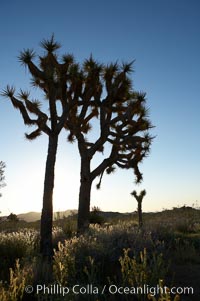
Joshua trees are found in the Mojave desert region of Joshua Tree National Park.
Species: Joshua tree, Yucca brevifolia
Location: Joshua Tree National Park, California
Image ID: 11996
Species: Joshua tree, Yucca brevifolia
Location: Joshua Tree National Park, California
Image ID: 11996
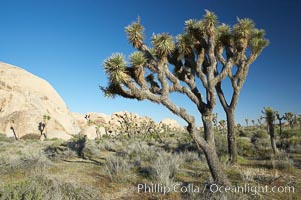
Joshua trees and strange rock formations characteristic of the Mojave desert region of Joshua Tree National Park.
Species: Joshua tree, Yucca brevifolia
Location: Joshua Tree National Park, California
Image ID: 11998
Species: Joshua tree, Yucca brevifolia
Location: Joshua Tree National Park, California
Image ID: 11998
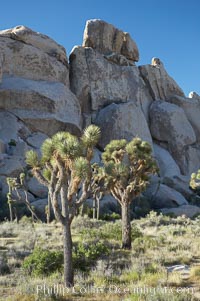
Joshua trees and strange rock formations characteristic of the Mojave desert region of Joshua Tree National Park.
Species: Joshua tree, Yucca brevifolia
Location: Joshua Tree National Park, California
Image ID: 11999
Species: Joshua tree, Yucca brevifolia
Location: Joshua Tree National Park, California
Image ID: 11999
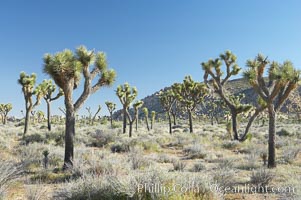
Joshua trees are found in the Mojave desert region of Joshua Tree National Park.
Species: Joshua tree, Yucca brevifolia
Location: Joshua Tree National Park, California
Image ID: 12001
Species: Joshua tree, Yucca brevifolia
Location: Joshua Tree National Park, California
Image ID: 12001
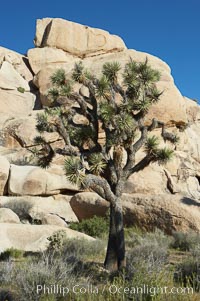
Joshua trees and strange rock formations characteristic of the Mojave desert region of Joshua Tree National Park.
Species: Joshua tree, Yucca brevifolia
Location: Joshua Tree National Park, California
Image ID: 12002
Species: Joshua tree, Yucca brevifolia
Location: Joshua Tree National Park, California
Image ID: 12002
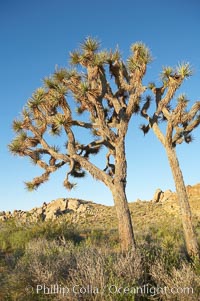
Joshua trees are found in the Mojave desert region of Joshua Tree National Park.
Species: Joshua tree, Yucca brevifolia
Location: Joshua Tree National Park, California
Image ID: 12003
Species: Joshua tree, Yucca brevifolia
Location: Joshua Tree National Park, California
Image ID: 12003
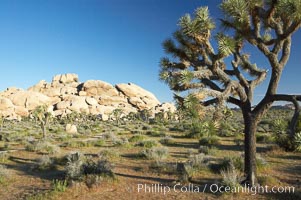
Joshua trees and strange rock formations characteristic of the Mojave desert region of Joshua Tree National Park.
Species: Joshua tree, Yucca brevifolia
Location: Joshua Tree National Park, California
Image ID: 12004
Species: Joshua tree, Yucca brevifolia
Location: Joshua Tree National Park, California
Image ID: 12004
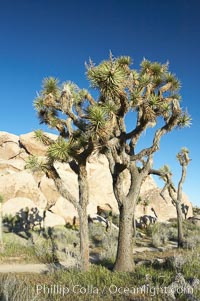
Joshua trees and strange rock formations characteristic of the Mojave desert region of Joshua Tree National Park.
Species: Joshua tree, Yucca brevifolia
Location: Joshua Tree National Park, California
Image ID: 12005
Species: Joshua tree, Yucca brevifolia
Location: Joshua Tree National Park, California
Image ID: 12005
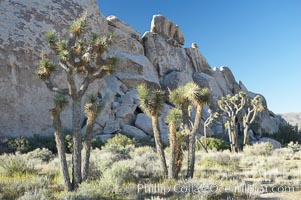
Joshua trees and strange rock formations characteristic of the Mojave desert region of Joshua Tree National Park.
Species: Joshua tree, Yucca brevifolia
Location: Joshua Tree National Park, California
Image ID: 12006
Species: Joshua tree, Yucca brevifolia
Location: Joshua Tree National Park, California
Image ID: 12006
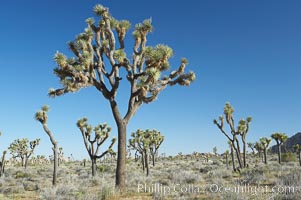
Joshua trees are found in the Mojave desert region of Joshua Tree National Park.
Species: Joshua tree, Yucca brevifolia
Location: Joshua Tree National Park, California
Image ID: 12007
Species: Joshua tree, Yucca brevifolia
Location: Joshua Tree National Park, California
Image ID: 12007
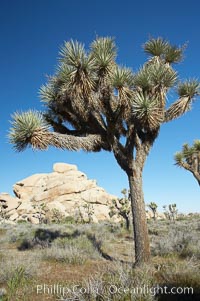
Joshua trees and strange rock formations characteristic of the Mojave desert region of Joshua Tree National Park.
Species: Joshua tree, Yucca brevifolia
Location: Joshua Tree National Park, California
Image ID: 12008
Species: Joshua tree, Yucca brevifolia
Location: Joshua Tree National Park, California
Image ID: 12008
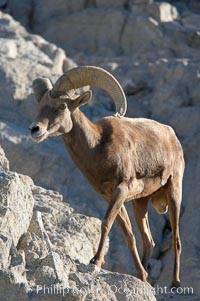
Desert bighorn sheep, male ram. The desert bighorn sheep occupies dry, rocky mountain ranges in the Mojave and Sonoran desert regions of California, Nevada and Mexico. The desert bighorn sheep is highly endangered in the United States, having a population of only about 4000 individuals, and is under survival pressure due to habitat loss, disease, over-hunting, competition with livestock, and human encroachment.
Species: Desert bighorn sheep, Ovis canadensis nelsoni
Image ID: 14651
Species: Desert bighorn sheep, Ovis canadensis nelsoni
Image ID: 14651
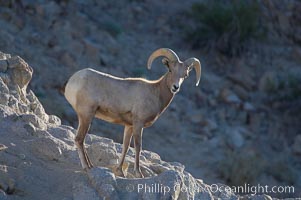
Desert bighorn sheep, young/immature male ram. The desert bighorn sheep occupies dry, rocky mountain ranges in the Mojave and Sonoran desert regions of California, Nevada and Mexico. The desert bighorn sheep is highly endangered in the United States, having a population of only about 4000 individuals, and is under survival pressure due to habitat loss, disease, over-hunting, competition with livestock, and human encroachment.
Species: Desert bighorn sheep, Ovis canadensis nelsoni
Image ID: 14652
Species: Desert bighorn sheep, Ovis canadensis nelsoni
Image ID: 14652
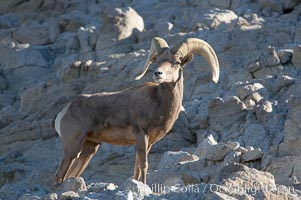
Desert bighorn sheep, male ram. The desert bighorn sheep occupies dry, rocky mountain ranges in the Mojave and Sonoran desert regions of California, Nevada and Mexico. The desert bighorn sheep is highly endangered in the United States, having a population of only about 4000 individuals, and is under survival pressure due to habitat loss, disease, over-hunting, competition with livestock, and human encroachment.
Species: Desert bighorn sheep, Ovis canadensis nelsoni
Image ID: 14653
Species: Desert bighorn sheep, Ovis canadensis nelsoni
Image ID: 14653
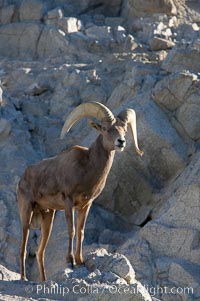
Desert bighorn sheep, male ram. The desert bighorn sheep occupies dry, rocky mountain ranges in the Mojave and Sonoran desert regions of California, Nevada and Mexico. The desert bighorn sheep is highly endangered in the United States, having a population of only about 4000 individuals, and is under survival pressure due to habitat loss, disease, over-hunting, competition with livestock, and human encroachment.
Species: Desert bighorn sheep, Ovis canadensis nelsoni
Image ID: 14654
Species: Desert bighorn sheep, Ovis canadensis nelsoni
Image ID: 14654
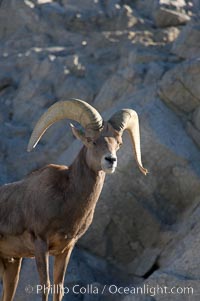
Desert bighorn sheep, male ram. The desert bighorn sheep occupies dry, rocky mountain ranges in the Mojave and Sonoran desert regions of California, Nevada and Mexico. The desert bighorn sheep is highly endangered in the United States, having a population of only about 4000 individuals, and is under survival pressure due to habitat loss, disease, over-hunting, competition with livestock, and human encroachment.
Species: Desert bighorn sheep, Ovis canadensis nelsoni
Image ID: 14655
Species: Desert bighorn sheep, Ovis canadensis nelsoni
Image ID: 14655
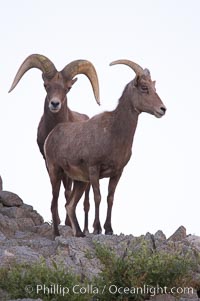
Desert bighorn sheep, male ram and female ewe. The desert bighorn sheep occupies dry, rocky mountain ranges in the Mojave and Sonoran desert regions of California, Nevada and Mexico. The desert bighorn sheep is highly endangered in the United States, having a population of only about 4000 individuals, and is under survival pressure due to habitat loss, disease, over-hunting, competition with livestock, and human encroachment.
Species: Desert bighorn sheep, Ovis canadensis nelsoni
Image ID: 14656
Species: Desert bighorn sheep, Ovis canadensis nelsoni
Image ID: 14656
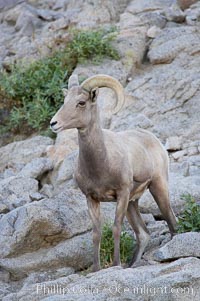
Desert bighorn sheep, young/immature male ram. The desert bighorn sheep occupies dry, rocky mountain ranges in the Mojave and Sonoran desert regions of California, Nevada and Mexico. The desert bighorn sheep is highly endangered in the United States, having a population of only about 4000 individuals, and is under survival pressure due to habitat loss, disease, over-hunting, competition with livestock, and human encroachment.
Species: Desert bighorn sheep, Ovis canadensis nelsoni
Image ID: 14657
Species: Desert bighorn sheep, Ovis canadensis nelsoni
Image ID: 14657
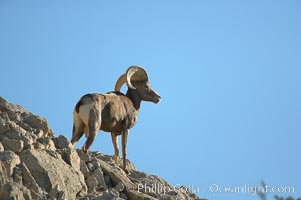
Desert bighorn sheep, male ram. The desert bighorn sheep occupies dry, rocky mountain ranges in the Mojave and Sonoran desert regions of California, Nevada and Mexico. The desert bighorn sheep is highly endangered in the United States, having a population of only about 4000 individuals, and is under survival pressure due to habitat loss, disease, over-hunting, competition with livestock, and human encroachment.
Species: Desert bighorn sheep, Ovis canadensis nelsoni
Image ID: 14658
Species: Desert bighorn sheep, Ovis canadensis nelsoni
Image ID: 14658
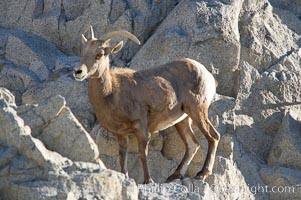
Desert bighorn sheep, female ewe. The desert bighorn sheep occupies dry, rocky mountain ranges in the Mojave and Sonoran desert regions of California, Nevada and Mexico. The desert bighorn sheep is highly endangered in the United States, having a population of only about 4000 individuals, and is under survival pressure due to habitat loss, disease, over-hunting, competition with livestock, and human encroachment.
Species: Desert bighorn sheep, Ovis canadensis nelsoni
Image ID: 14659
Species: Desert bighorn sheep, Ovis canadensis nelsoni
Image ID: 14659
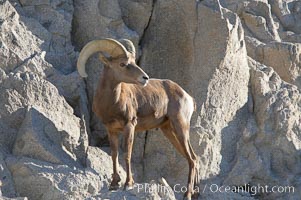
Desert bighorn sheep, male ram. The desert bighorn sheep occupies dry, rocky mountain ranges in the Mojave and Sonoran desert regions of California, Nevada and Mexico. The desert bighorn sheep is highly endangered in the United States, having a population of only about 4000 individuals, and is under survival pressure due to habitat loss, disease, over-hunting, competition with livestock, and human encroachment.
Species: Desert bighorn sheep, Ovis canadensis nelsoni
Image ID: 14660
Species: Desert bighorn sheep, Ovis canadensis nelsoni
Image ID: 14660
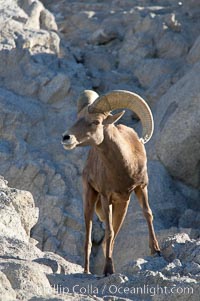
Desert bighorn sheep, male ram. The desert bighorn sheep occupies dry, rocky mountain ranges in the Mojave and Sonoran desert regions of California, Nevada and Mexico. The desert bighorn sheep is highly endangered in the United States, having a population of only about 4000 individuals, and is under survival pressure due to habitat loss, disease, over-hunting, competition with livestock, and human encroachment.
Species: Desert bighorn sheep, Ovis canadensis nelsoni
Image ID: 14661
Species: Desert bighorn sheep, Ovis canadensis nelsoni
Image ID: 14661
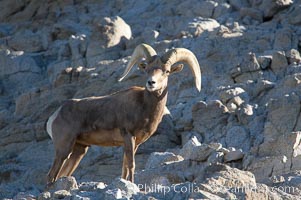
Desert bighorn sheep, male ram. The desert bighorn sheep occupies dry, rocky mountain ranges in the Mojave and Sonoran desert regions of California, Nevada and Mexico. The desert bighorn sheep is highly endangered in the United States, having a population of only about 4000 individuals, and is under survival pressure due to habitat loss, disease, over-hunting, competition with livestock, and human encroachment.
Species: Desert bighorn sheep, Ovis canadensis nelsoni
Image ID: 14662
Species: Desert bighorn sheep, Ovis canadensis nelsoni
Image ID: 14662
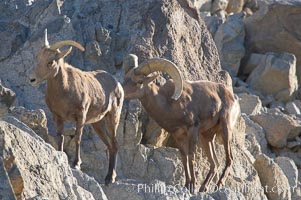
Desert bighorn sheep, male ram and female ewe. The desert bighorn sheep occupies dry, rocky mountain ranges in the Mojave and Sonoran desert regions of California, Nevada and Mexico. The desert bighorn sheep is highly endangered in the United States, having a population of only about 4000 individuals, and is under survival pressure due to habitat loss, disease, over-hunting, competition with livestock, and human encroachment.
Species: Desert bighorn sheep, Ovis canadensis nelsoni
Image ID: 14663
Species: Desert bighorn sheep, Ovis canadensis nelsoni
Image ID: 14663
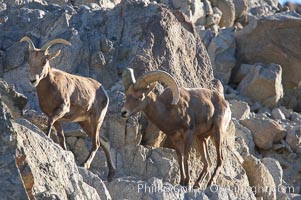
Desert bighorn sheep, male ram and female ewe. The desert bighorn sheep occupies dry, rocky mountain ranges in the Mojave and Sonoran desert regions of California, Nevada and Mexico. The desert bighorn sheep is highly endangered in the United States, having a population of only about 4000 individuals, and is under survival pressure due to habitat loss, disease, over-hunting, competition with livestock, and human encroachment.
Species: Desert bighorn sheep, Ovis canadensis nelsoni
Image ID: 14664
Species: Desert bighorn sheep, Ovis canadensis nelsoni
Image ID: 14664
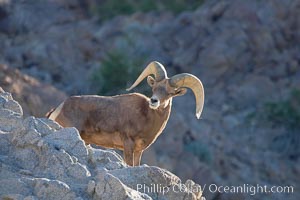
Desert bighorn sheep, male ram. The desert bighorn sheep occupies dry, rocky mountain ranges in the Mojave and Sonoran desert regions of California, Nevada and Mexico. The desert bighorn sheep is highly endangered in the United States, having a population of only about 4000 individuals, and is under survival pressure due to habitat loss, disease, over-hunting, competition with livestock, and human encroachment.
Species: Desert bighorn sheep, Ovis canadensis nelsoni
Image ID: 14665
Species: Desert bighorn sheep, Ovis canadensis nelsoni
Image ID: 14665